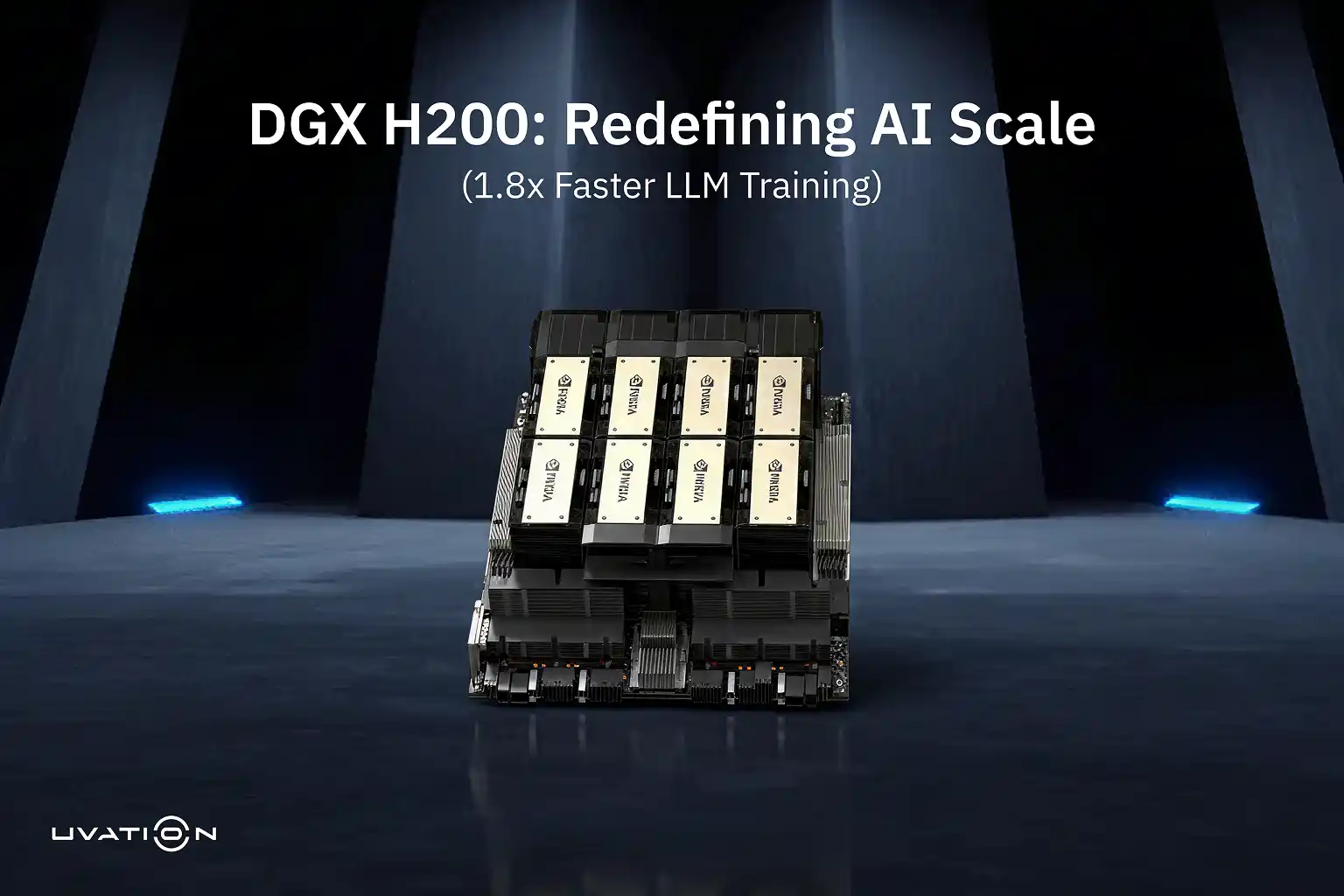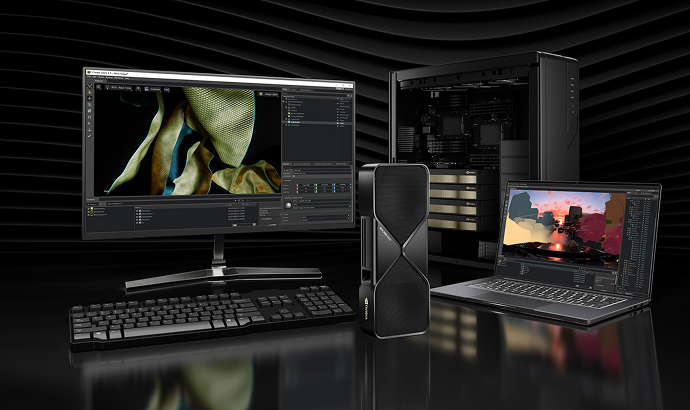

Writing About AI
Uvation
Reen Singh is an engineer and a technologist with a diverse background spanning software, hardware, aerospace, defense, and cybersecurity. As CTO at Uvation, he leverages his extensive experience to lead the company’s technological innovation and development.

The comparison between the NVIDIA DGX H200 and DGX H100 is conducted to understand the real-world performance gains, memory upgrades, and improvements in energy efficiency of the newer system. In enterprise-scale AI development, performance efficiency directly determines the pace of innovation and influences operational costs. The DGX H100, which was built around the Hopper architecture, previously set new standards for computational throughput and became the preferred system for training large models in areas like generative AI, computer vision, and natural language processing. The DGX H200 builds upon this legacy by introducing substantial architectural and memory improvements to redefine what is possible for large-scale AI workloads.
The DGX H100 system features eight H100 Tensor Core GPUs. Each of these H100 GPUs includes 80GB of HBM3 memory. The newer DGX H200 system, introduced in 2024, is equipped with eight NVIDIA H200 GPUs. The substantial hardware refinement in the H200 is the inclusion of 141GB of HBM3e memory per GPU—a significant 76% increase in capacity compared to the H100. This expanded memory pool is crucial for overcoming data bottlenecks when training models with hundreds of billions of parameters, and allows for efficient scaling of models exceeding one trillion parameters.
The DGX H200 provides substantial improvements in both memory bandwidth and interconnect speeds. The DGX H100’s HBM3 configuration provides a memory bandwidth of 3.35 TB/s per GPU. In contrast, the H200’s HBM3e memory delivers 4.8 TB/s per GPU, which is 43% higher bandwidth. Another critical upgrade is in the NVLink interconnects, which handle data exchange between GPUs. The DGX H200 doubles the NVLink bandwidth to 1.8 TB/s, compared to 900 GB/s on the H100. This enhanced interconnect fabric, combined with the expanded memory, helps reduce data movement overhead, allowing all eight GPUs in a DGX H200 system to function almost like a single processor.
The DGX H200 delivers measurable performance gains due to its hardware and architectural refinements. For AI training workloads involving Large Language Models (LLMs) greater than 70 billion parameters, the DGX H200 is 1.8x faster than the DGX H100, achieving faster model convergence. In terms of computational throughput, the DGX H200 provides 2,400+ TFLOPs of FP8 Tensor Core performance, which is a meaningful advantage over the DGX H100’s 1,979 TFLOPs. For high-performance computing scenarios, specifically scientific simulations, the DGX H200 offers a throughput enhancement of approximately +60%.
Energy efficiency is a central factor in the DGX H200’s design, as it delivers significantly better performance per watt compared to the DGX H100. This improvement means the H200 performs more computational work for every watt consumed, reducing cooling requirements and energy waste. These gains are achieved through architectural refinements in the Hopper GPUs, improved voltage regulation, and memory modules designed for higher throughput at a lower power draw. This improved performance-per-watt ratio leads to a measurable reduction in the Total Cost of Ownership (TCO) by lowering operational costs associated with energy consumption and cooling infrastructure. Furthermore, the H200 has a redesigned airflow layout to manage heat more efficiently, reducing hotspots and extending hardware lifespan.
The DGX H200 provides an efficient bridge for enterprises planning large-scale AI rollouts toward future Blackwell-based systems, such as the DGX B200. The DGX B200 is expected to extend the DGX line with massive parallel processing efficiency and enhanced fifth-generation NVLink, doubling interconnect speeds beyond the H200’s 1.8 TB/s. Crucially, the DGX H200 and the DGX B200 share the same NVLink and NVSwitch infrastructure, allowing for the creation of hybrid clusters that combine H200 and B200 nodes. This means that investments in DGX H200 clusters today maintain compatibility for upcoming hardware upgrades, ensuring deployment continuity with minimal required adjustments to networking or software stacks.
We are writing frequenly. Don’t miss that.
